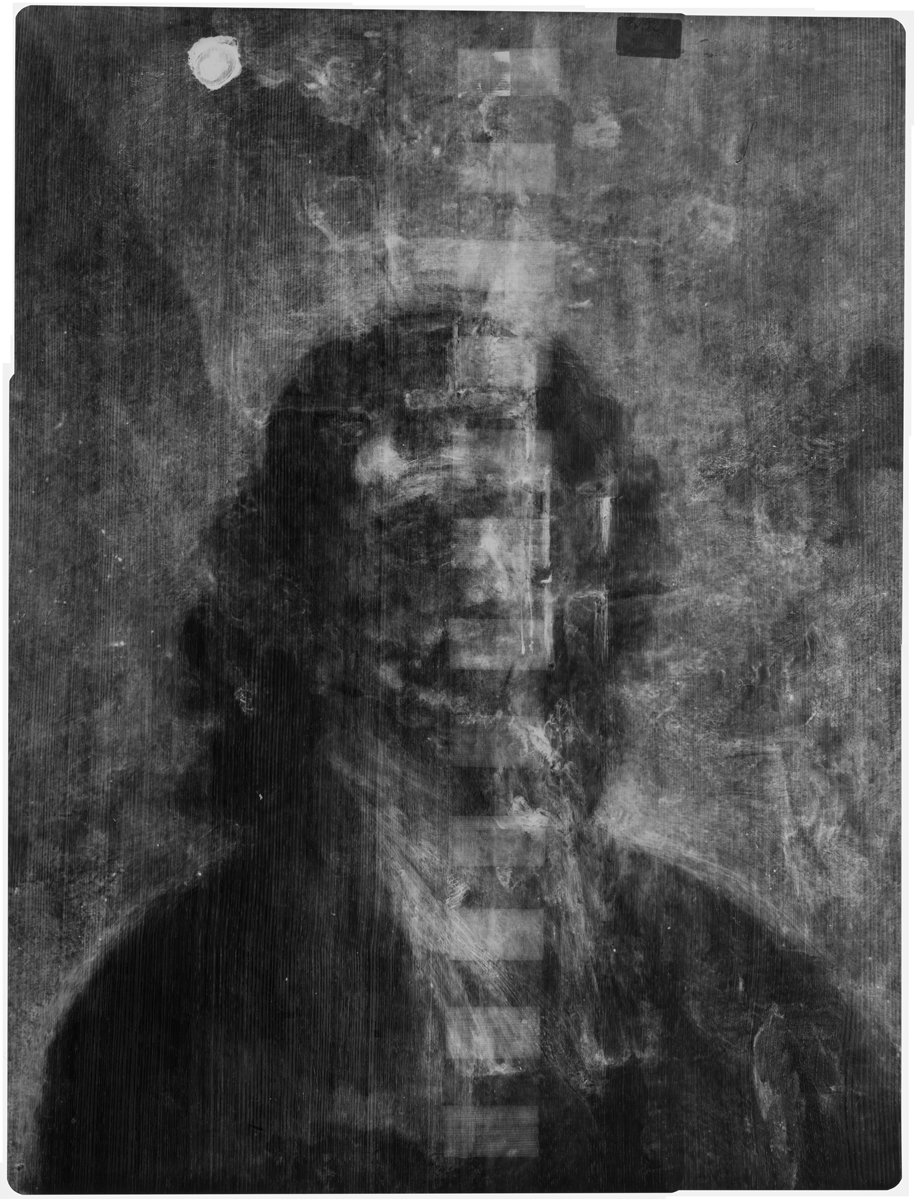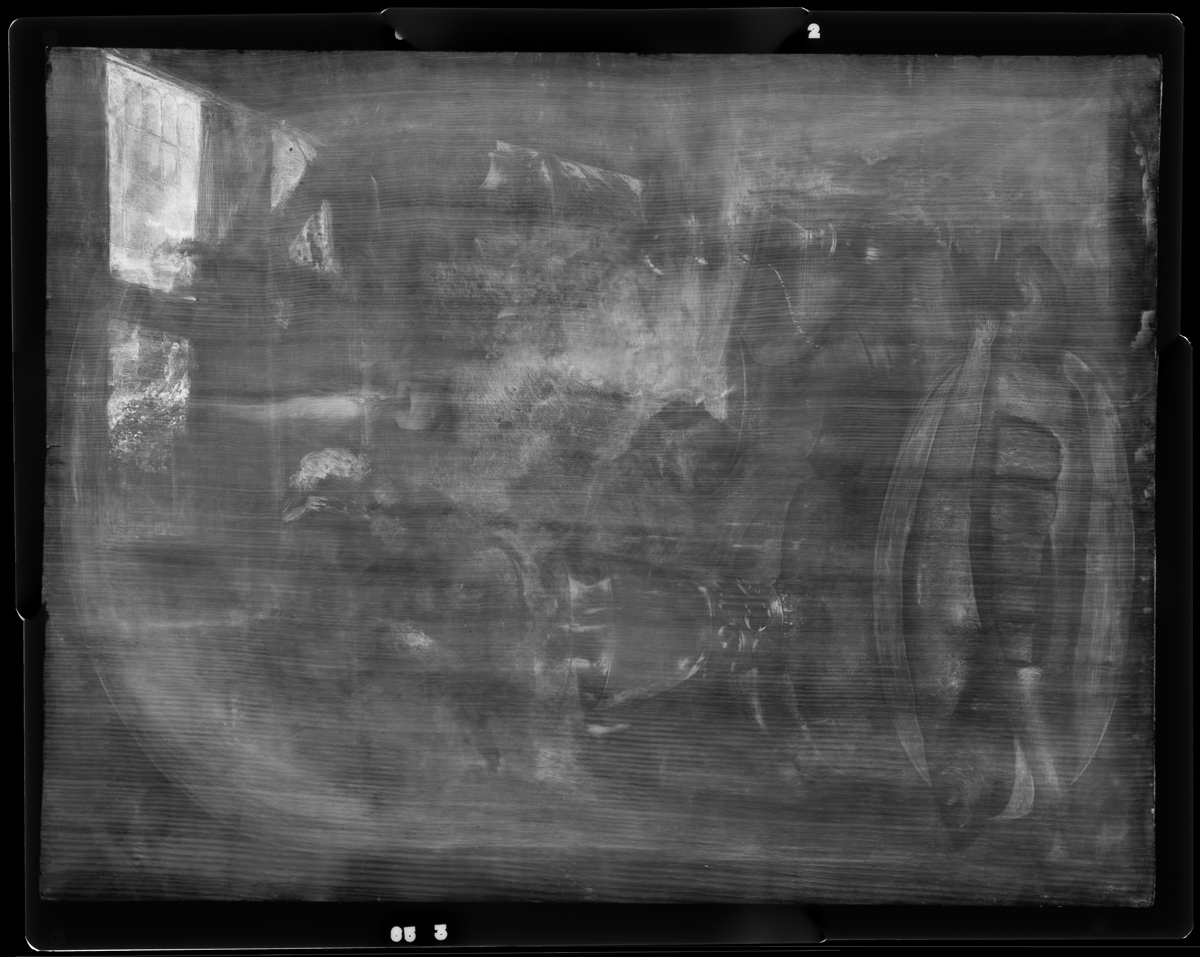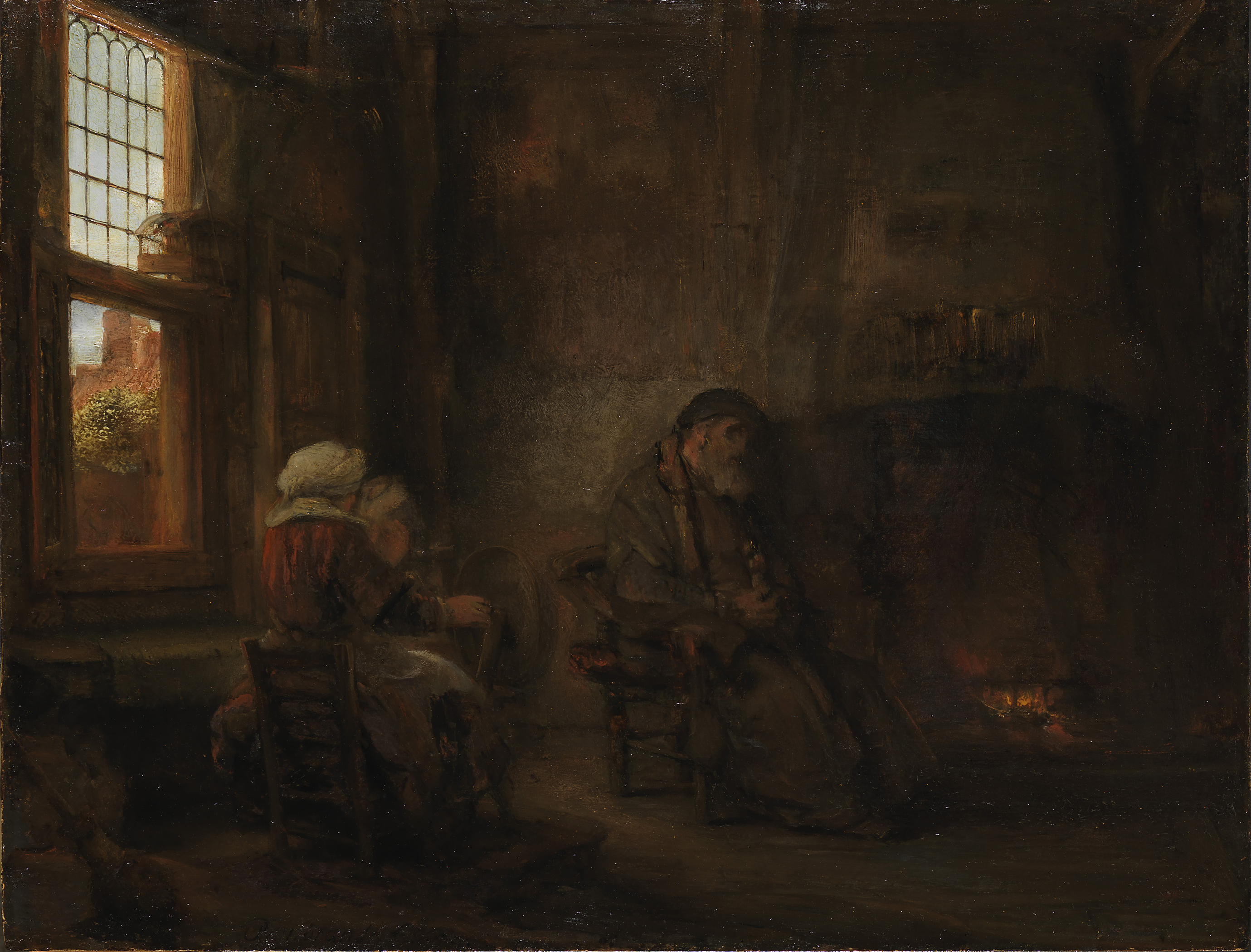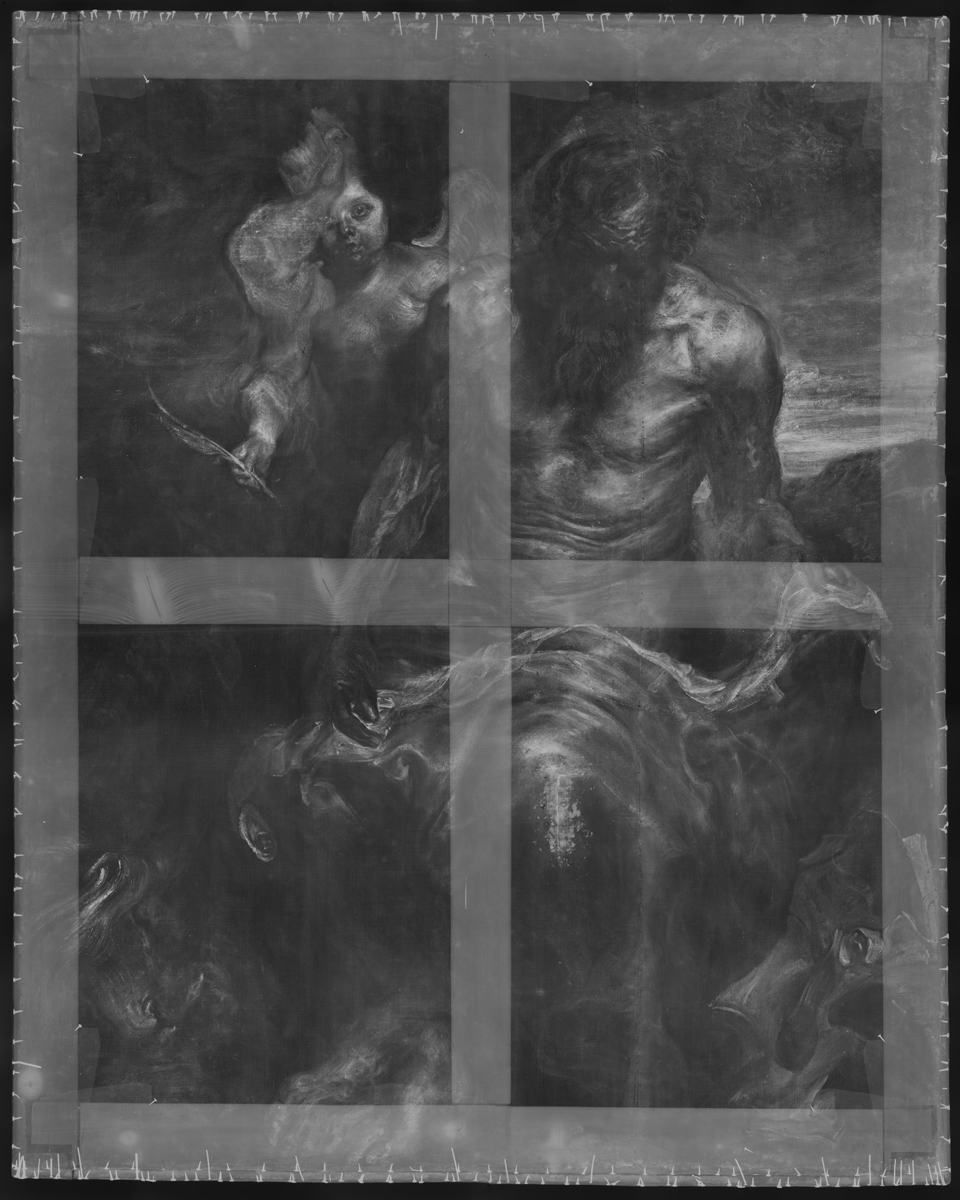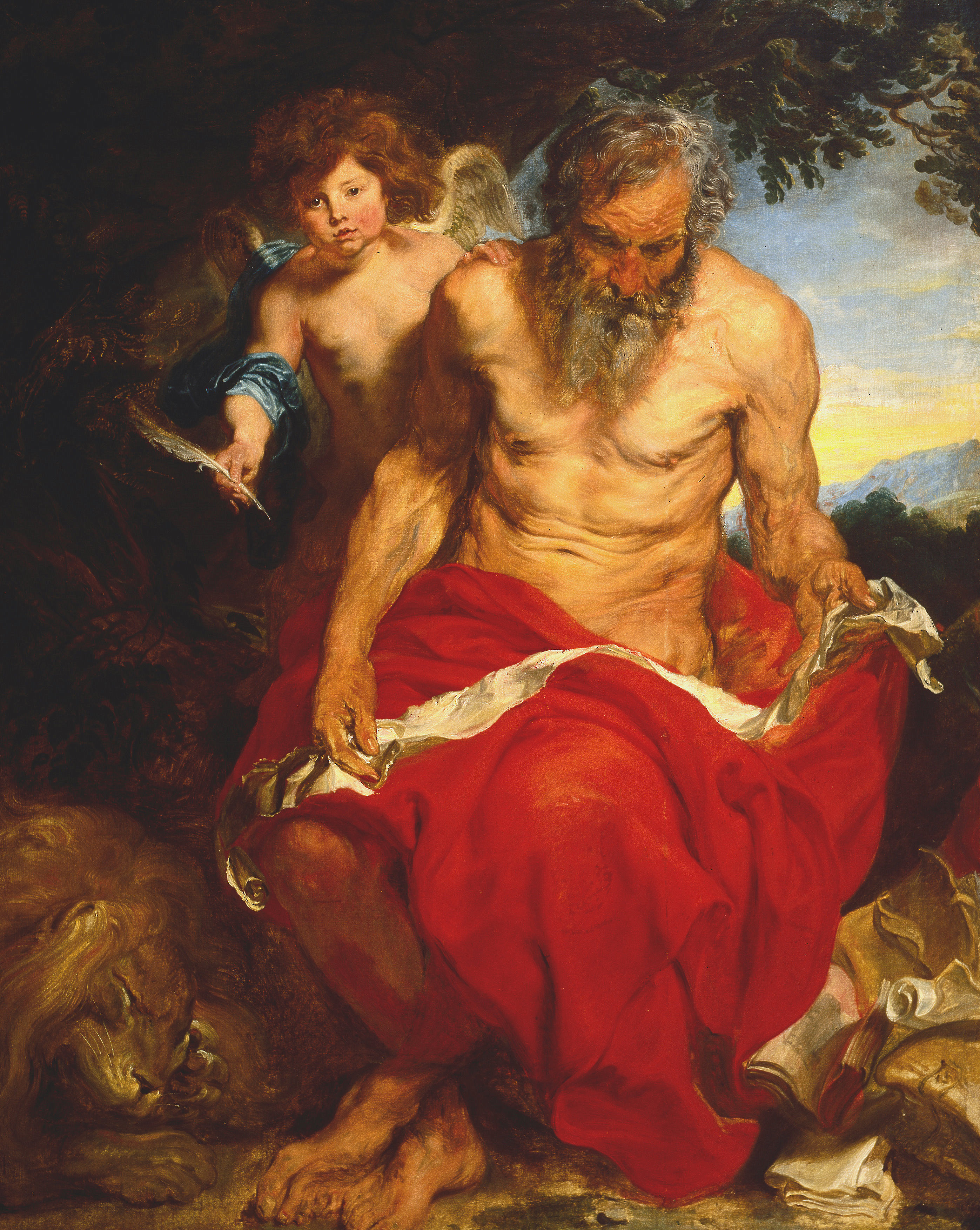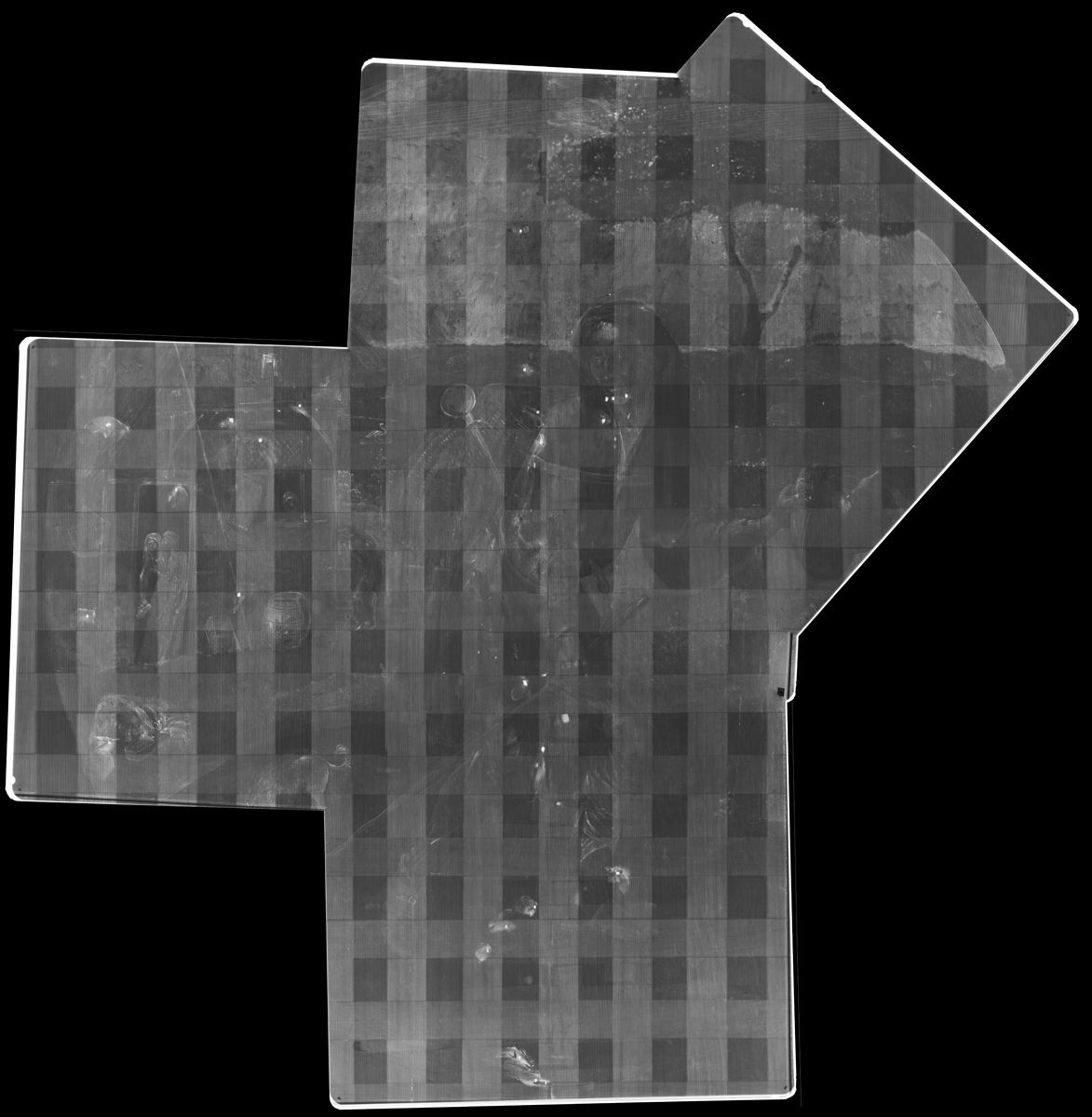All X-ray images digitised
X-ray photography is also used in the museum world to help date artworks or to determine the construction of three-dimensional objects. For example, it can show whether the nails in a piece of furniture are old or new, and it can reveal the internal structure of a sculpture or a globe.
Historically, the X-ray team at Boijmans Van Beuningen has mostly made X-rays of paintings and of a few sculptures. All the existing X-rays measure 40 x 50 cm. If a painting is smaller than these dimensions, the entire work can be seen in the image. But many works are larger than this format and therefore require several X-rays to document the entire work. Digitised images of the X-rays can then be ‘stitched’ together, aligning their edges precisely to create a continuous complete image without the annoying overlap of the separate photos.
In 2020, financial support from the Prins Bernhard Cultuurfonds enabled the museum to digitise and stitch together its collection of nearly 1300 X-rays of 237 objects. Because the quality of the physical X-rays deteriorates over time, digitisation is essential for the long-term management and preservation of this valuable source of information. It also makes it easier to view and share the images.



